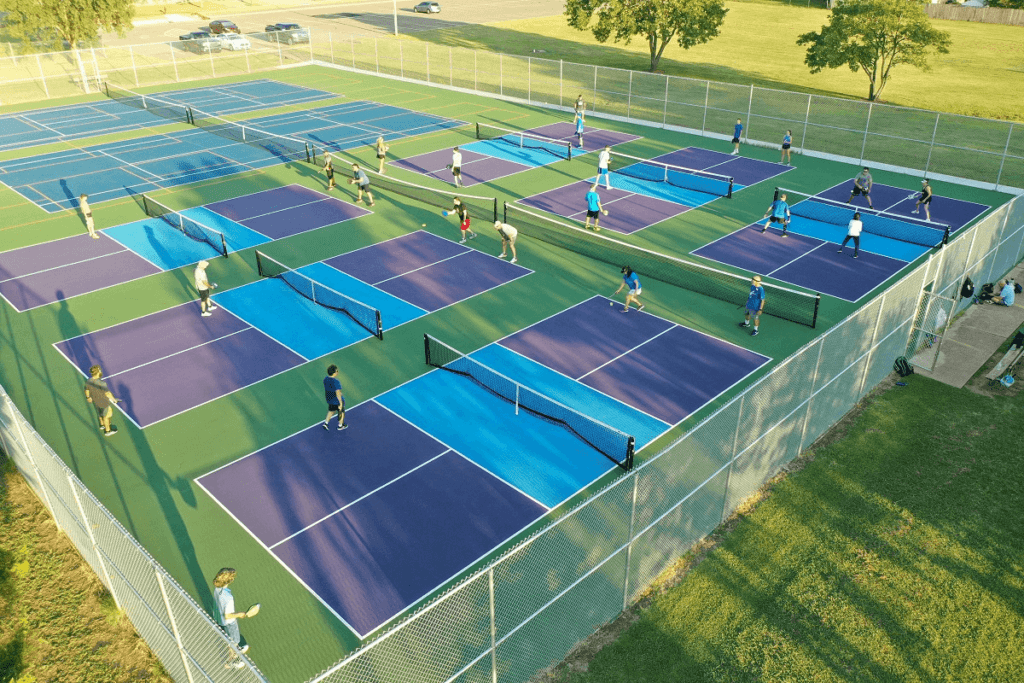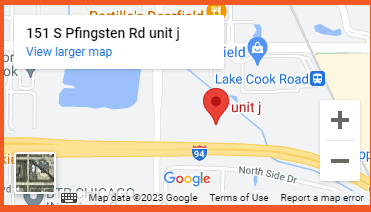Pickleball is a rapidly growing sport that combines elements of tennis, badminton, and ping-pong. It is played on a badminton-size court with a slightly modified tennis net, a paddle, and a plastic ball. Designing a pickleball court requires careful planning and understanding of the court layout and design principles. This article provides a comprehensive guide on residential outdoor pickleball courts installation diagram and layout planning, ensuring your court meets official standards and player needs.
Understanding Pickleball Court Dimensions
The official pickleball court size is 20 feet wide by 44 feet long for both singles and doubles play. The net height is 36 inches at the sidelines and 34 inches in the middle. A 7-foot non-volley zone, also known as the “kitchen,” extends from the net on both sides of the court. It’s crucial to start with these dimensions when planning your court layout.
Selecting the Site
Choosing the right site is the first step in pickleball court construction. The area should be flat and level, with enough space around the court for players to move freely. Consider the orientation of the court; north-south is preferred to minimize sun glare. Accessibility, parking, and proximity to other facilities should also be taken into account. For detailed guidance and examples, you can visit HCASports.com, which offers resources on the layout and design of sports facilities.
Court Layout and Design

Begin with a detailed diagram that outlines the court’s dimensions, including the playing area, the non-volley zone, and the service areas. This diagram will serve as the blueprint for your court layout.
- Surface Material: The playing surface should offer good traction and proper drainage. Concrete, asphalt, and modular tiles are popular choices for outdoor courts, while wooden and synthetic surfaces are common for indoor courts.
- Markings: Use durable, contrasting paint for court lines to ensure visibility. The lines should be 2 inches wide, clearly defining the boundaries, non-volley zone, and service areas.
- Netting: The net should be 22 feet wide and installed with the top edge at 36 inches on the sides and 34 inches in the center. Ensure the net is taut and evenly suspended across the width of the court.
- Lighting: For evening play, consider installing LED lighting around the court. The fixtures should be positioned to minimize shadows and glare on the playing surface.
- Seating and Shade: Provide seating areas and shade structures for players and spectators. These amenities enhance the comfort and usability of the court.
Customization and Additional Features
While adhering to official dimensions and standards, you can customize your court to fit specific needs or preferences. Here are a few ideas:
- Color Scheme: Choose colors that reduce glare and heat absorption. Light blue and green are popular for their visibility and aesthetic appeal.
- Fencing: Enclose the court with fencing to contain balls and provide safety. The fence should be at least 10 feet high and include gates for easy access.
- Storage and Equipment: Incorporate storage solutions for paddles, balls, and maintenance equipment. A small shed or lockable cabinets can be very convenient.
- Accessibility: Ensure the court and facilities are accessible to everyone, including players with disabilities. This includes ramps, wide gates, and accessible seating areas.
Implementation and Maintenance
Once the design is finalized, the next steps involve construction, surfacing, and finishing. Work with experienced contractors who understand the specifics of sports court construction. Regular maintenance is crucial to keep the court in good condition. This includes surface cleaning, line repainting, and net checking.
Conclusion
Designing and constructing a pickleball court is a strategic process that requires precision, adherence to official specifications, and a focus on player experience. Whether you’re aiming to add a pickleball court to a community center, a sports facility, or a private residence, the key to success lies in meticulous planning and execution.
For those looking to bring their pickleball court vision to life, partnering with a professional team that specializes in custom commercial athletic courts is essential. Home Court Advantage is your go-to source for designing and building custom pickleball courts that not only meet official standards but also cater to your specific needs and preferences. With expertise in crafting high-quality, durable, and visually appealing athletic courts, Home Court Advantage ensures that your pickleball court will be a centerpiece of community engagement, fitness, and fun.
Don’t settle for anything less than the best in your quest to create the perfect pickleball court. Visit Home Court Advantage today to explore your options, get inspired, and start the journey toward realizing your dream pickleball court. Whether you’re a seasoned player or new to the game, a custom-designed pickleball court from Home Court Advantage is the ultimate way to elevate your sporting experience.

Nate Parsons is the owner of Home Court Advantage, a leading manufacturer and supplier of premium residential and commercial athletic courts based in Northern Illinois. With a strong background in therapeutic recreation and business from York College, Nate has excelled in the sports industry, from college tennis to national rankings in platform tennis. He has served as the Director of Racquet Sports at Glen View Club, President of the Professional Platform Tennis Association, and as a teaching professional in tennis, pickleball, and platform tennis. Nate is also the founder of Pickleball AI, a platform for tracking players and points, and Club Dink, a pickleball brand that brings fun to the game.











